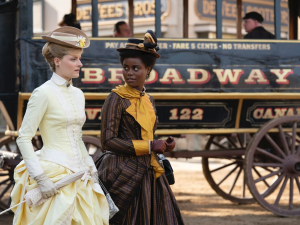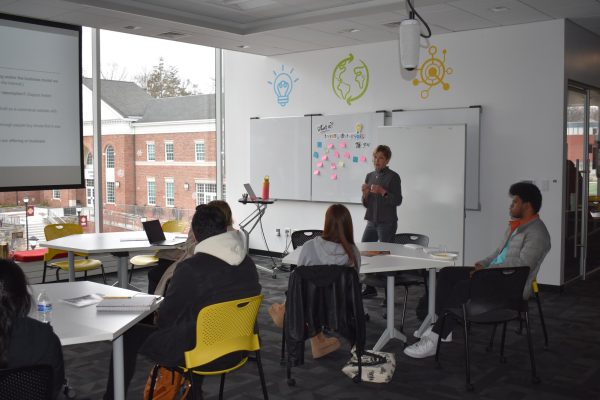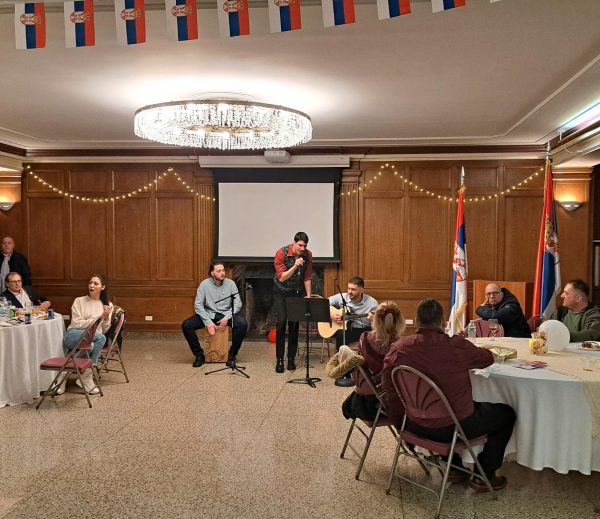Letter to the Editor: Calling it as I see it: Institutional Racism
April 2, 2014
To the Editor,
In light of recent (and not so recent) events regarding race relations at Iona College, and after speaking with students, faculty and staff, I thought it would advance the conversation to share with the community a paper I was invited to present at Princeton University in November 2010 for a conference entitled, “Diversity and the Future of the Professoriate – The Impact of Diversity on Scholarship, Pedagogy and University Climate.” It illustrates the challenges faced by faculty of color in predominantly white institutions and, more importantly, the choices with which those institutions are faced to address them with integrity. While it was written over three years ago, the data and the overall climate reflected here have not changed. I share this with the hope it will provide an occasion for solidarity among faculty and students of all colors, and serve as a reminder to this institution to live into its mission so firmly grounded the social justice heritage of the Christian Brothers and the Catholic tradition.
Thank you for inviting me to participate in this important and timely discussion regarding the future of the professoriate. It could not have come at a more perfect moment: First, just last month I spoke on this very topic with the Dean of Arts and Science at Iona, as the College engages in a search for its new President, with my hope that faculty diversity will be a priority for the new administration. Secondly, last evening I attended a reception hosted by the Alumni Association of Colgate University (my alma mater) in which the newly inaugurated President, Dr. Jeffrey Herbst, outlined his commitment to enhance racial/ethnic diversity on campus at all levels as a necessity if Colgate is to become (as desired) the leading liberal arts university in the United States.
I’d like to reflect on the theme of this conference in reverse order, as I believe the climate of a particular institution regarding diversity initiatives is a crucial determinant of the faculty member’s ability to engage in effective pedagogy, as well as pursue and sustain scholarly inquiry.
University Climate:
To give you a sense of the climate around diversity at Iona College, let me share with you a bit about the College, the community in which it is situated and finally, a profile of the faculty in terms of diversity.
A snapshot of Iona College:
• Founded by the Congregation of Christian Brothers in 1940
• Claims student-teacher ratio of 13:1
• 3250 undergraduate students
• Located in New Rochelle, NY
• Approximately 30 minutes north of mid-town Manhattan
A snapshot of the demographics of New Rochelle (2008) and a snapshot of the faculty of Iona College (2010) can be found in the charts below.
This is not new information to the administration or the Board of Trustees of the College. In fact, in presentations to the Board by the Faculty Senate (2009 and 2010), it was impossible to ignore the overwhelming disparity between white and non-white faculty members; this was highlighted as a recommended goal for the new President:
• Faculty: address faculty salaries, further support research, reconsider the 4/4 load, address perceived gender disparities, begin to recruit the next generation of faculty before senior faculty leave, diversify the faculty to reflect student demographics. (Faculty Senate report to the Board of Trustees, 2010)
While other colleges/universities struggle to attract a diverse faculty because of their locations, and fight even harder with faculty retention, New Rochelle is NOT such a location! Without even using the proximity to NYC as a selling point, it would be easy to attract and retain a diverse faculty cohort, with two significant assumptions: the institution views faculty diversity as a necessity for academic excellence; and the institution is willing to pay the salaries necessary to attract and retain faculty where the cost of living is one of the highest in the country.
The number of faculty of color at Iona College suggests that neither of these has been central to its goals; that has been the climate of the institution since my hire in 2005.
Pedagogical approaches:
Regardless of the climate, we are responsible to teach and so I did in my first year: a 4/4 course load of approximately 40 students in each class. In one of those courses, “Christian Sexual Ethics,” I assigned at least 100 pages of weekly reading, I prepared a challenging take-home midterm, and the class hit a wall.
Five students who were consistently engaged in the class approached me to voice their “overwhelm” at the breadth of the exam, prompting me to reflect upon my reasons for administering such a demanding assessment:
1. As a Puerto Rican scholar, I wanted these students to know I wasn’t some “charity” case who waltzed through the academy to fill a quota. I wanted them to see, since many if all of them had NEVER seen a Latino/a professor before, that I was authoritative as a professor.
2. As a woman of color, I wanted these students to know that I wasn’t going to be their mother, midwife, or friend. I wanted them to see this Hispanic scholar as one deserving as much respect as any white male faculty member they had experienced.
3. As a feminist theologian teaching at a College grounded in the Catholic tradition, where sexuality is THE most contested territory in theological/ethical discourse, I wanted them to know that men with clerical collars do not hold a monopoly on the language of moral theology.
My need to assert credibility as a Puerto Rican Catholic female scholar in an environment with no other visible Latino/a presence changed my pedagogical approach in the classroom into something unrecognizable to me. But if this was going to be their ONLY exposure to a faculty of color, I felt I had an obligation to uphold something, even if it went against everything I believed in as an educator.
Scholarly inquiry:
From a university climate in which faculty diversity is not seen as an institutional priority or necessity, to the effect that the lack of presence has on one’s pedagogy, you can imagine the impact on the capacity to engage in meaningful and sustained scholarly inquiry. The lack of time and energy to pursue research/writing has been the “collateral damage” of working in an institution that says it values scholarship, but does not provide the intentional space and deliberate time for faculty to develop as scholars. While this is true across the board among all faculty, it is particularly lethal for faculty of color.
I don’t want to make a choice between being a faculty advisor for Latino/a students and creating space to research and write. I want to be present for them because they NEED that presence, and yet it comes at such a price when tenure/promotion, as well as speaking engagements and academic exposure, are the trade-offs. While I’ve managed to produce a few essays in edited volumes, we know that credibility in our respective disciplines is tied to our ability to contribute significantly to the discourse in our field. We must then hope for a sabbatical year funded by an outside grant, allowing dedicated time to put on paper the book that is swirling in our heads. Those opportunities are rare for faculty of color.
Final comments:
In his comments last night, President Herbst made a critical affirmation in relation to the economic difficulties facing colleges trying to expand their vision, suggesting this is not an occasion for being stalled in one’s tracks. Instead, it’s a wake-up call to change lanes, to do things differently and to bring as many creative minds to that process as possible. The extent higher education is willing to make diversity a priority will determine the success of our students to move and transform the world we are becoming. That success cannot be envisaged in homogeneous terms, nor should it ever have been.
Shifting the institutional climate is possible only with a commitment from the highest levels, namely the President and the Board of Trustees, to change the lanes toward greater diversity by investing financial resources to make that happen. Without sustained commitment, our pedagogy and our scholarship will hit a wall and we will not have the strength or desire to traverse its boundary.
Teresa Delgado, Ph.D.
Director, Peace and Justice Studies
Associate Professor of Religious Studies










